Dustin L. Derry Moments in Light
Posted on October 1, 2019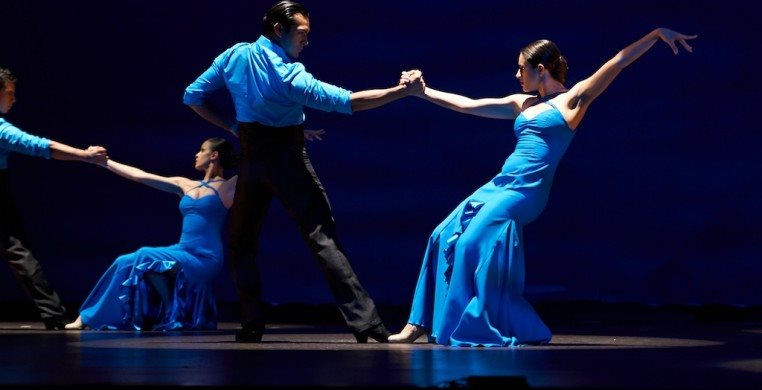
“Time is what keeps everything from happening at once.” This line from the seminal science fiction novel “The Girl in the Golden Atom,” which was published almost a century ago, kept running through our head during our conversation with this accomplished dance designer and former lighting director of the Moscow Ballet.
Channeling time and its power to define individual moments, is at the heart of Derry’s design philosophy. Through his precisely timed cues, he is able to accentuate every movement in a dance and passage in its music, summoning forth the distinct identity of each, and in the process ensuring that they all don’t appear to be “happening at once!”
We first encountered Derry through his work this summer for Ensemble Español’s Pasión Oculta recital. Impressed by how his lighting impeccably followed five couples dancing on stage, we questioned him about timing. As he was later to make clear, true timing (in dance or any other form of lighting) only begins with the execution of cues. Ultimately it is about creating moments in light.
You once told us that designing for dance is “all about timing.” How would you define “timing” in dance lighting?
“Wow. That is a loaded question! For me timing relates to every aspect of our industry. Timing is that synergy between the technology and the humans involved to create a perfect moment or string of moments. Timing is understanding the limitations of technology and how to work with them. Between having to track dancer movements with moving lights, to intensity fades, or changing the delays and times in a color fade, to specify which path we take to land at a specific color…timing is indeed everything!”
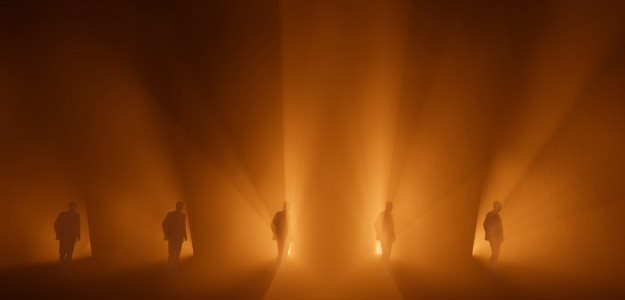
So timing is everything, but specifically, what does it contribute to the audience’s experience of a dance piece?
“To me timing can make or break a dance piece — or any lighting design for that matter. The right timing can take a show that is ‘good’ and add that little bit of finesse that makes a show great. The difference between good and great is often measured in times under a second. For instance, in a dance piece, often times you have created these very organic feeling long cues that grow and swell or fade with the music. Usually you can fudge that timing a little, and no one will ever notice… so the difference becomes more subconscious.
“However, say you have that one cue at the end of an intense piece that is a zero count snap to a ‘special’ with a drum hit as a button to the music, even if you are a quarter of a second off, everyone in the room can feel it. By that I mean you, the dancer, the audience, the producer – everyone! This negative feeling then grows over the course of the show, leaving the audience feeling like something is missing, even though they cannot put their finger on what exactly made them feel that way.
“I have seen it happen many times, more often especially before LED became prevalent use in the dance. A SM missed a call by less than a second either way and what is normally a standing ovation sort of performance turned into what feels like pity claps for the dancer. It’s heartbreaking. A lot of this can be overcome by using timecode, but dance is organic and sometimes rather than being helpful, TC can actually make things worse.”
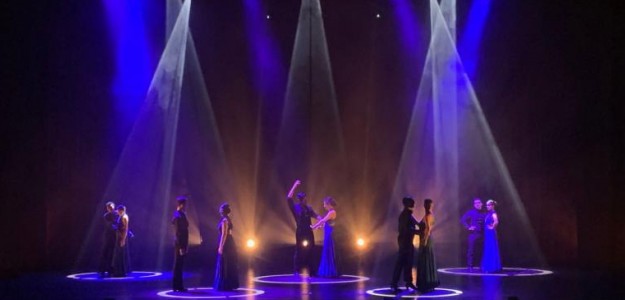
There is a point in virtually every dance when movement on stage stops. When this happens it isn’t timing, but the static looks that convey the moment. We’ve been impressed by how you impart genuine emotional power to these moments. What advice do you have for lighting those moments when time seems to stand still?
“Thank you! Those are definitely my favorite moments. It’s dramatic when you have a dance piece filled with energy and movement — and then suddenly there’s nothing, just maybe a single special, the dancer and the music. Or maybe there’s even silence! This is the sort of thing that even now sends chills up my spine thinking about.
“I think what advice I would offer revolves around simplicity – the proverbial KISS principle. ‘Keep it Simple’. Those moments, unless the director and artist ask for something specific, are not the time to strut your stuff as a lighting designer. At moments like this you want to make sure that any light on stage, its angles, movement, sand colors all draw the attention to where it needs to be…on that dancer. You will have time to show off in another moment, another piece, or another company…you must as an LD support the dancer and the vision of the director/choreographer at all times. While lighting has become an integral part of dance, we are not watching dance to see the cool lighting, we are there to connect to emotion translated into movement in its purest form. Make sure everything you do supports that and elevates the dance, and you cannot go wrong.”
When you have multiple dancers on stage as you did with Pasión Oculta, how do you coordinate your lighting to match their individual timing?
“This can be a challenge for sure. For me in this instance we locked in our timing by working with the dancers and re-running particularly challenging sections of the piece repeatedly, tweaking my delays and fades to match the dancer’s natural movement. As a dance LD, I would rather tweak and futz my timing on the console than have the dancer have to try and adjust to me. I want dancers to just be dancers and do what they need to do to give the best performance. I am there to support them, not the other way around.
“Occasionally though, we find challenges due to physical limitations of moving heads – such as when we have to track a dancer on a straight line but find ourselves in that weird place in a head’s pan/tilt, where that straight line is almost impossible. In those instances, we will actually have the dancer adjust speed to match the lights movement, but this a last resort.”
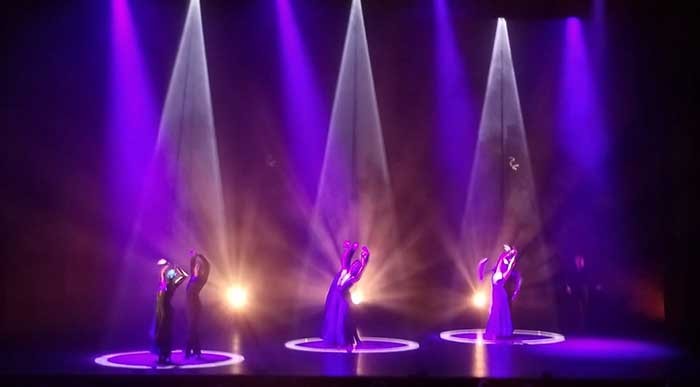
On the subject of Pasión Oculta, we were impressed with how you mixed top lighting and back lighting to add depth to the stage. Can you talk about how you harmonize the two?
“This is definitely a balancing act for me. In the past, when I have used true low angle backlighting, it has only been as an accent, little pops in the music, and to be honest, I hated it because it felt abusive to the audience. (I also tend to not like audience blinders much except as an exclamation point on occasion.) This time I wanted to use backlight as texture/background for the piece to create depth and intensity as well as a way to shape focus for the audience.
“Toplight for me usually serves as a way to throw focus to a specific area of the stage. Toplight can be effective with texture and color, but by and large it is the punctuation not the words. The audiences’ eyes naturally follow distinct line subconsciously, so it is very effective here.
“Backlight as I touched on earlier CAN be incredibly abusive to the audience if great care is not taken particularly in regards to intensity. For Pasión Oculta, the backlight had gobos which definitely helped make it feel less obtrusive to the eyes. The fun part for me is when you do find the balance between the two, magical things start to happen and even in a 2000+ seat auditorium there is still a depth to the stage and that is accented by the backlight, and the audience can still connect with that single dancer.”
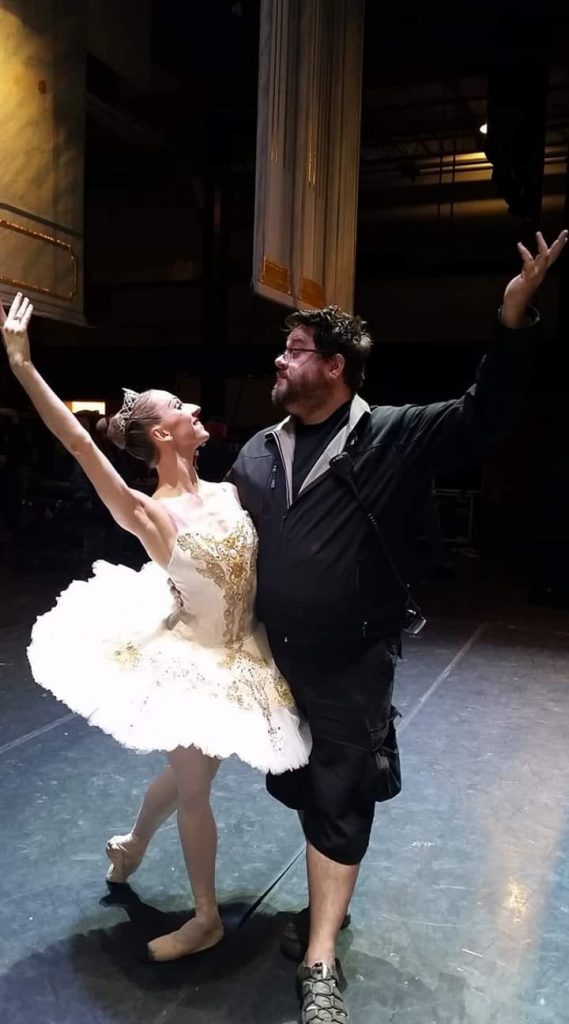 Dance typically doesn’t have many scenic elements. Instead it’s the body of the dancer that is the focal point. How do you adjust for different bodies when you light dance?
Dance typically doesn’t have many scenic elements. Instead it’s the body of the dancer that is the focal point. How do you adjust for different bodies when you light dance?
“Good question! This is arguably one of my biggest challenges as an LD. For me, context matters, meaning as much as we want to be ‘color blind’ in terms of race and working with human beings, we also cannot ignore color in regards to skin tones even for a second or we run the risk of losing our dancers into costumes and backgrounds.
“We often work with dancers of a variety of ethnic backgrounds, and each company has lists of ‘rep’ gels and colors we have found offer a good balance, and use for each as a basis to expand from. With such a wide gamut of skin and body types it is a constant variable to be aware of. The biggest challenge is an instance like Deeply Rooted Dance, who derive their work from their deep African heritages, but also feature dancers from the complete opposite end of the spectrum of skin tones to help tell their story. In that instance, understanding balance and understanding color theory are absolutely necessary.”
You mentioned LED technology earlier. With the advent of LED fixtures, more color is being introduced to dance lighting. How does this impact the design process? Does it affect your work in terms of timing?
“LEDs have changed the dance world profoundly. Personally, I tried to adopt LED as soon as I could because it opened so many doors. I even caught a lot of flak about it from colleagues for doing so. As a designer, it has been invaluable to be able to simplify my rigs and go from needing three or four static lights at each position — if I wanted to even pretend to mix colors – down to single lights at each position and have unlimited color options at my fingertips.
“In relation to timing, LED has also changed my world. Once upon a time, it used to be that the idea of a TRUE zero count anything was near impossible. No matter what, there was some sort of curve to output. Filaments take time to heat and cool, which introduces lag on both sides, mechanical shutters also have a travel distance and often you can see the shutters in the edges of the lights, same with color flags. With LED, all that inconsistency goes away and suddenly your lights respond like you envisioned.”
Are the timing lessons learned from dance transferable? Do they help in lighting other genres like theatre or concerts?
“Oh absolutely! I would say that with straight theatre – not a musical — the transfer is less-profound…. But even then, knowing how long to hold and fade a blackout at the end of a scene can increase drama and tensions, cause fear, or let the audience linger in the emotions of two lovers embracing. For music, the importance of timing in my work grows exponentially. How many times have you gone to a show where a less experienced LD is just doing ‘Flash and Trash’ with zero regards to the tempo, feeling, or texture of the music? This is boring; it lacks life; and frankly, it makes me sad. With so many tap-to-time features out there, there’s really no excuse for it these days, even when busking.”
When you begin a project and you sit down with the choreographer, how do you begin to put together your creative ideas? What sort of things do you look at?
“The process with choreographers can vary widely. Everyone has their own process and expectations at different stage of that process, so I can’t say that I have one specific process. Generally speaking, the first meeting, we just listen to the music. No dancers, no set, no lights, no commentary… just listening and seeing what images flash into our heads. Then we will listen again and talk through major aspects of what the chorographer wants and specific concepts and ideas they have. So, we’ll ask questions like ‘do we need specials?’ ‘Set pieces?’ ‘Projection, lasers?’
“After that we usually will sit and watch the piece with dancers in a run-through. The meeting after the first run-through is the most important because more often than not, that is when my own visions really start coming together internally and where I can then start getting them into pre-viz to show and discuss with the directors. The biggest things I ‘look’ at… hmmm… for me, are shape and movement of the choreography. Do the dancers move smoothly or is the dance jagged and jerky, are the dancers making long lines with their body? Do we need to see their emotion in their face, or can we show the same with abstract ideas and color over their body? How much of the stage do they cover with the movement, are there ‘light-motifs’ we can use to inform cueing? And then there is ‘the music’… the music of course informs the dance, but I also think it should inform the lighting as well. I have been accused more than once of dancing on the stage with the cast through my lights and that is an amazing feeling.”
What is the biggest challenge in lighting dance?
“Time and Money. I know it sounds cliché, but the dance world is intense and fast moving, with budgets that are incredibly limited. We often find ourselves with four hours to load-in, four hours to tech an entire show with 6-12 pieces – some of which are brand new premiers – and then do the show that night followed by strike. In this sort of time frame, you need to be on top of your game as a LD. You also need to be flexible about making drastic changes to your plan at any moment.”
What is the most rewarding aspect of lighting dance?
“Seeing the finished product and hearing the occasional gasp from the audience when you hit that perfectly timed cue. When I can sit and watch my own work without trying to fix it and just enjoy, that is when I know I am done.”